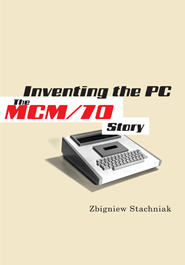 McGill-Queen's University Press.
McGill-Queen's University Press.
Jacket designed by David Drummond.
ISBN 978-0-7735-3852-8

Chapter 2
Joseph A. Weisbecker played a pivotal role in transitioning RCA into the microprocessor era. In 1971, he designed an 8-bit LSI microprocessor referred to as the "FRED microprocessor". Its architecture was outlined in Weisbecker's 1971 RCA technical reports. Between 1971 and 1977 (even before the single-chip implementation of his microprocessor was available), he proposed several low cost, FRED-based computers and game consoles to the RCA management emphasizing the technology's benefits to the computer and consumer electronics industries, education, and electronic entertainment. Some of Weisbecker's designs were subsequently developed into commercial products and successful hobby computers (see Table 1).
| Name |
Date |
Type |
| The Microprocessor System 00 |
1971 |
concept product |
| TAC-321 |
1972 |
concept product |
| Fred 1.5 |
1972 |
concept product |
| Fred 2 |
1973(?) |
concept product |
| COSMAC 180 |
1975(?) |
lab use only |
| COSMAC 180A |
1975(?) |
lab use only |
| Microtutor |
1974 |
demonstrator |
| Studio II (FRED 3) |
1976 |
game console |
| COSMAC ELF |
1976 |
hobby computer |
| COSMAC VIP |
1977 |
hobby/home computer |
Table 1. Some of the hardware from the Weisbecker's FRED family.
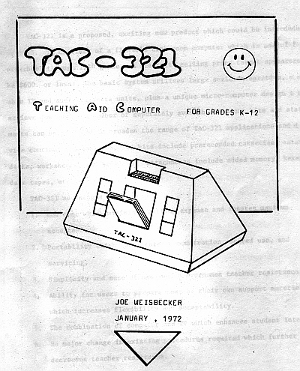
Fig. 1. The cover of the TAC-321 class computer document; courtesy of
David Sarnoff Library.
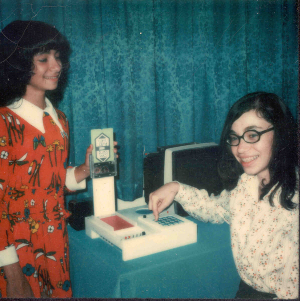
Fig. 2. J. Weisbecker's doughters operating the Fred 2 computer; courtesy of
David Sarnoff Library.
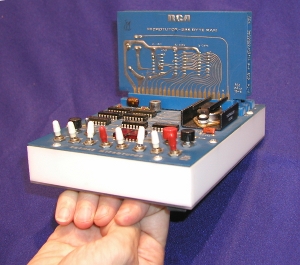
Fig. 3. The RCA MicroTutor; courtesy of David Sarnoff Library, photograph by Z. Stachniak.
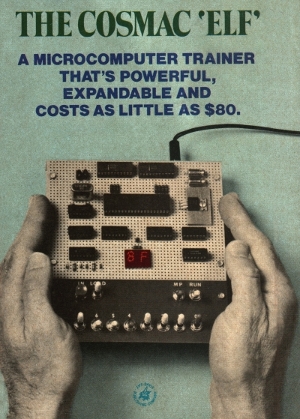
Fig. 4. Weisbecker's COSMAC ELF hobby computer on the cover of the August 1976 issue of
Popular Electronics.
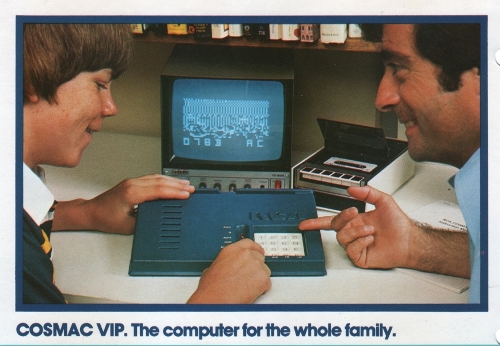
Fig. 5. The RCA COSMAC VIP hobby/home computer on the cover of RCA's 1977 promotional brochure.

Chapter 3
The MCM/70's research and development took place mostly in MCM's manufacturing facility
in Kingston. The following three photographs, taken at the Kingston facility, show
the MCM plant, a R&D station (with the rack prototype of the MCM/70
and an MCM/700), and a MCM/700 assembly station. Do you recognize any of the
individuals on these photographs?
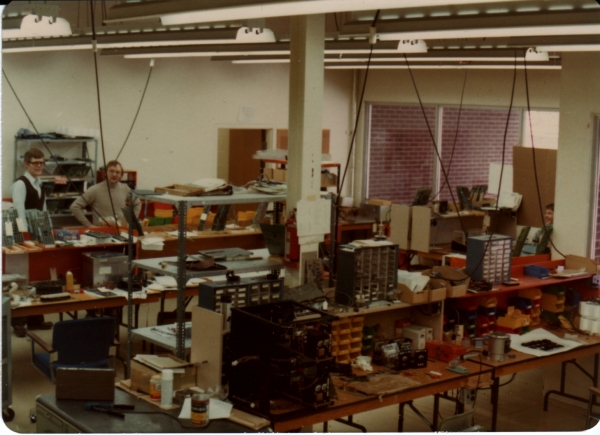
Photograph 1. MCM R&D facility in Kingston. Photograph courtesy
of Jose Laraya.
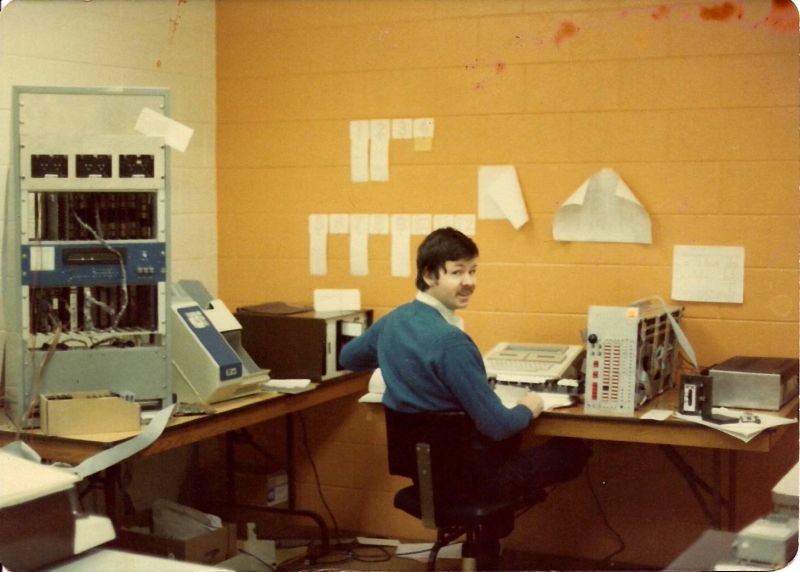
Photograph 2. R&D station at Kingston facility. The photograph
shows the rack prototype of the MCM/70 (left), floppy drives, and
an MCM/700 operated by Cam Farnell. Photograph courtesy of
Cam Farnell.
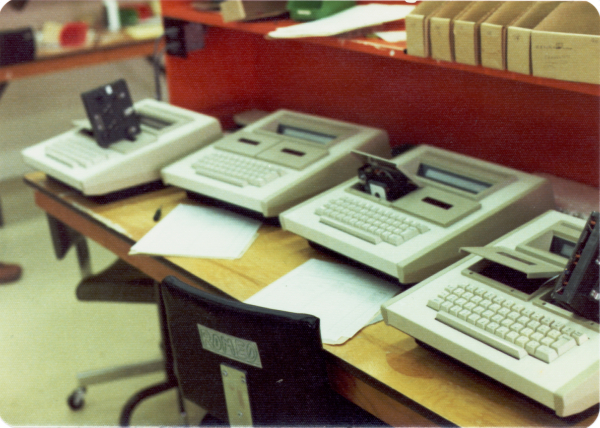
Photograph 3. "ROMed" MCM/700s at Kingston facility. Photograph
courtesy of Jose Laraya.
The next photograph shows Jose Laraya in his MCM office (c. 1975?)
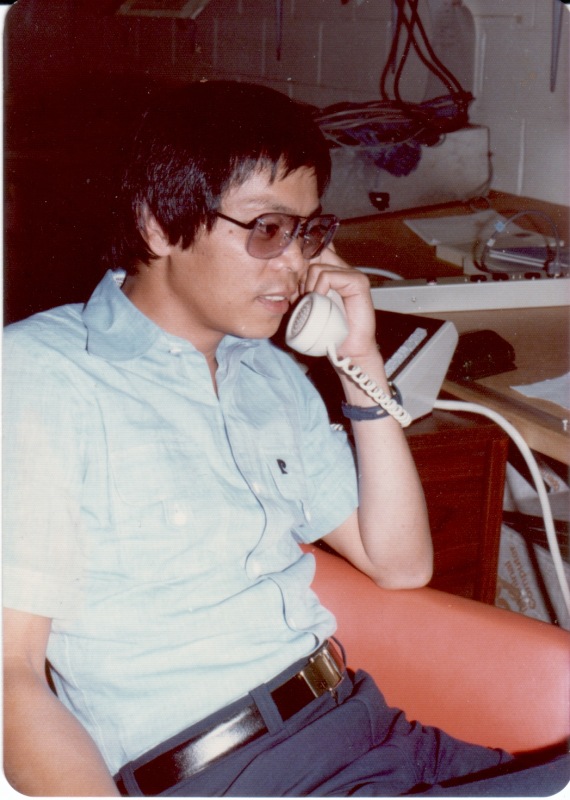
Photograph 4. Jose Laraya relaxing in his MCM office.
Photograph courtesy of Jose Laraya.
In May of 2011, after almost 35 years since leaving MCM, Jose Laraya had an
opportunity to see an MCM/70 computer again at York University.
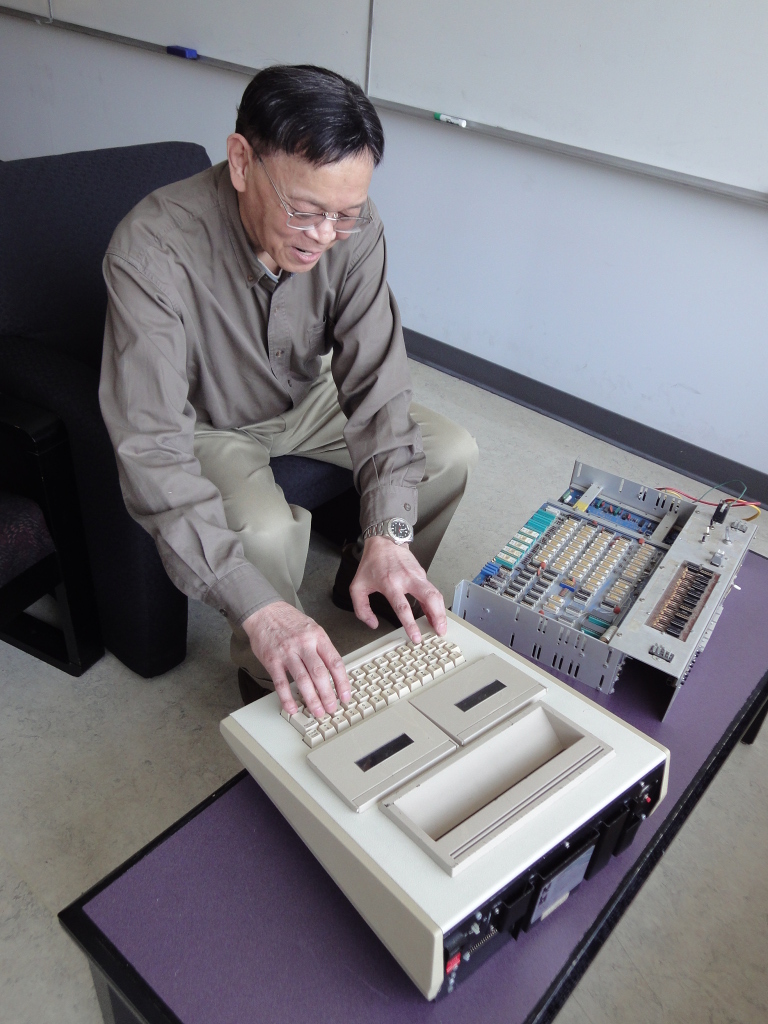
Photograph 5. Jose Laraya inspects an MCM/70 computer at York University. The
piece of hardware to the right of the MCM/70 was Laraya's first attempt at
building an APL microcomputer based on the Intel 8008 microprocessor.
This prototype used an Intel SIM8-01 development board. (Photograph by Z. Stachniak, May 30, 2011.)

Chapter 6
In 1988 Kutt's new company--All Computers Inc.--introduced the ChargeCard,
a little circuit board designed to speed up the operations of personal
computers. The All ChargeCard was awarded PC Magazine's
Annual Award for Technical Excellence in 1988.
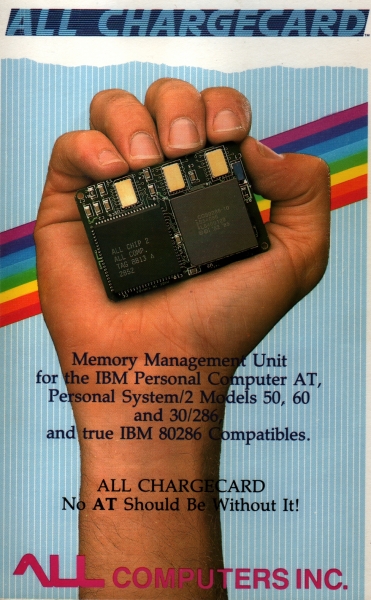
Photograph 6. The cover of the All ChargeCard Installation &
User's Manual, All Computers, 1987-89.

Chapter 7
After leaving MCM, Laraya designed a number of computers that were manufactured in Ontario. The Persona desktops were manufactured by a Canadian company Nelma
Electronics Ltd, and became popular microcomputers in Ontario. Another computer,
the Zapstar, was primarily designed for applications in travel industry. The futuristic
lookind computer was unveiled during the 1979 Ontario Travel Industry Conference that
took place on January 19 at the Harbour Castle hotel. The computer featured a "space-age" color display and could be interfaced with 256 other Zapstars.
(Source: F.O. Villasin, What's 'Zapstar'? A Computer designed by Filipino expert, machine performs many feats, Balita, February 1-15, 1979.)
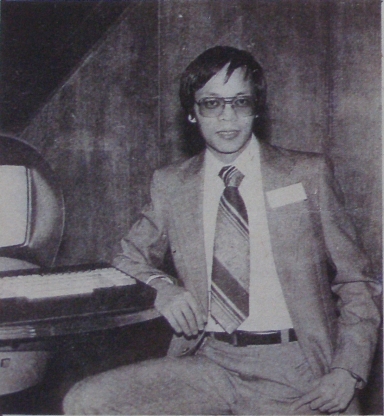
Photograph 7. Jose Laraya with his Zapstar computer in 1979. This photograph
appeared in F.O. Villasin, What's 'Zapstar'? A Computer designed by Filipino expert, machine performs many feats, Balita, February 1-15, 1979. By permission
from Balita.
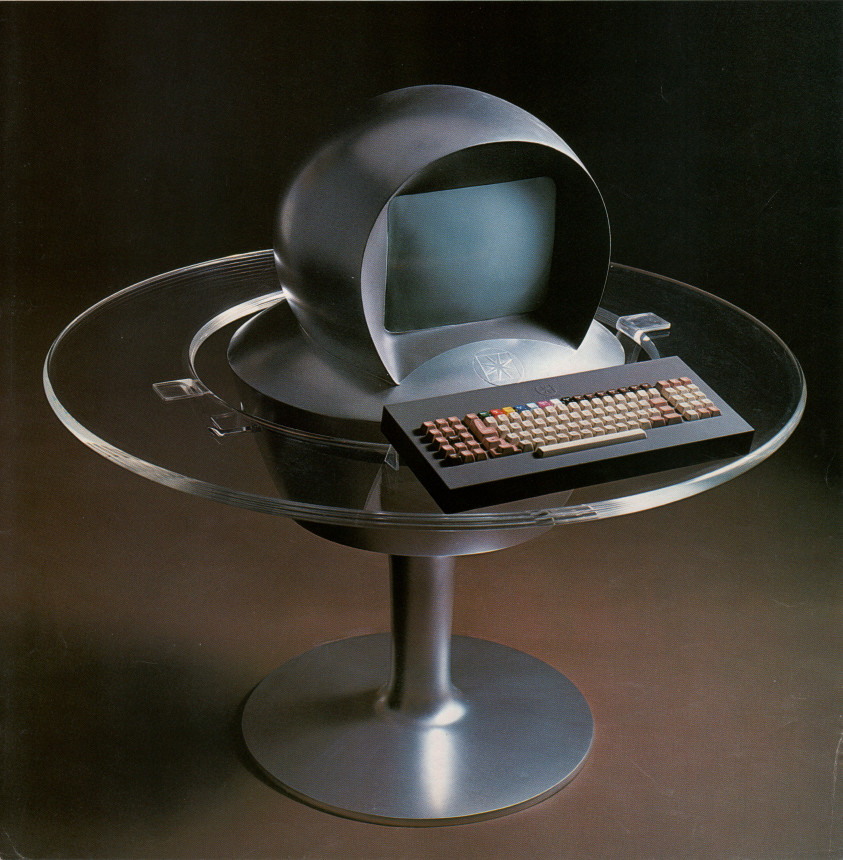
Photograph 8. The Zapstar computer in full view. This photograph appeared in Zapsystems' promotional brochure, 1978, as well as in
F.O. Villasin, "What's 'Zapstar'? A Computer designed by Filipino expert, machine
performs many feats," Balita, February 1-15, 1979.

Chapter 8: Welcome to the computer age!
In the paper A History of APL in the USSR written by Andrei Kondrashev and Oleg Luksha for the ACM
APL Quote Quad (vol. 2, nr. 2 (1991), pp. 8--11), the authors state that the interest in APL in USSR was
triggered by a visit of Pavel Medov, a professor of the University of Toronto to the Computing Center of the Academy of Sciences
of the USSR in late 1974. "In the spring of 1975, professor Medov brought an MCM/70 computer with built-in APL system to the
Computing Center of the USSR Academy of Sciences. The first Soviet APL program was written by Dr. Victor Sokolov that summer. Later
on, another such computer appeared. During the next few years these were the only APL systems available for Soviet users."
(Quote from page 8 of the paper.)

Identifying MCM/70 models
The MCM/70 computers were sold in a range of configuartions identifiable by
a machine's model number on the back plate of the unit. The model number
consists of three digits followed by two optional letters:
- the first digit should always by "7";
- the second digit describes the amount of RAM installed, increments of 2K;
- the third digit denotes the number of tape drives installed in the computer;
- the optional string "EF" at the end of the model number indicates
that the computer is equipped with the extended I/O features.

Known Installations of MCM computers (the MCM/70, /700, /800, /900)
Because the MCM/70 and /700 computers were sold with similar conigurations (models 720, 721, 741, 742, 781, and
782), the list provides no explicit reference
to either MCM/70 or MCM/700 when such an information is missing in source
documents.
Canada
- Abbey Life Insurance Co. of Canada
hardware: the MCM/800 and /900
applications: research
- Farion S.R. Systems, Dorval, P.Q.
hardware: model 782, SCI-1200, MCM 132
applications: microwave communication, systems engineering, filter design
- Hospital for Sick Children, Toronto, ON
hardware: model 782
applications: biostatistical research and analysis
- Hutchence, Keith, Regina, Sask
hardware: MCM/700 model 741
applications: modeling and simulation, time series trending, statistics
- H.G. Cousins Assoc., N.S.
hardware: model 741
applications: ?
- Frontenac Board of Education, ON
hardware: model 741
applications: ?
- J.E. Parrot and Co., Sherbrooke, P.Q.
hardware: model 781
applications: land survaying
- Lanark County Board of Education, Kingston, ON
hardware: model 781
applications: student instructions and administration
- Ministry of the Environment, Ontario Government,
Downsview, ON
hardware: model 782, MCP 132
applications: pollution Research and modelling
- March Management Consultants Ltd., Tornto, ON
hardware: MCM/700
applications: insurance accounting, administration
- Ontario Hydro-Electric Power Commission, Toronto, ON
hardware: MCM/70 model 782, MCM 132, the computer now resides
at the University of Toronto
applications: pollution research and modelling
- Paul Phelan Assoc., Toronto, ON
hardware: two models 782, and two MCP 132s
applications: financial and investment analysis
- Quinn & Assoc., Toronto, ON
hardware: model 782
applications: municipla govt. modelling
- Ross-Willcocks Assoc., Halifax, N.S.
hardware: model 781, MCP 132, DDS 500
applications: quantity surveying, construction cost estimating
- St. Lawrence College, Kingston, ON
hardware: model 782
applications: mathematics and computer studies
- Sydenham District Highschool, Sydenham, ON
hardware: MCM/70 model ?
applications: student instruction, mathematics and computer
studies
- University of Sherbrooke, Sherbrooke, P.Q.
hardware: model 782, MCP 132
applications: student instruction and administration
non-Canadian
- AVM, Jamestown, N.Y.
hardware: MCM/70
applications: engineering drawing
- BK Dynamics, Maryland
hardware: model 781
applications: ?
- Case Western Research University, Clivland, Ohio
hardware: MCM/70, MCM/700 model 782, MCP 132
applications: engineering design
- Chapin, Ned, Ph.D., Menlo Park, CA
hardware MCM/70 model 782
applications: ?
- Chevron Oil Research Co, La Habre, CA
hardware: MCM/70
applications: geological research and analysis
- CIA
hardware: MCM/?
applications: ?
- Courtney, Harley, Professor (emeritus) of Accounting
University of Texas at Arlington
hardware: MCM/70
applications: education
- Walter Wysoczansky, phisicist
hardware: model 721, serial nr. 0650003
purchased through Electronic Vision Inc., San Diego, CA
applications: mathematical physics
- Firestone, Akron, Ohio
hardware: model 741
applications: engineering design
- IBM, Atlanta, Georgia
hardware: two MCM/70s
applications: research and analysis
- Infosci Inc., Menlo Park, CA
hardware: model 782, MCP 132
applications: systems consulting support
- International Exec. Data, CA
hardware: model 782
applications: ?
- Karber, David, J., CA
hardware: model 782
applications: ?
- L.A. Community College, L.A., CA
hardware: MCM/70
applications: mathematics and Computre Science Dept. teaching APL
- Michigan State University, Michigan
hardware: model 782, SCI-1200
applications: general-purpose problem solving in Education Department
- Mutual Benefit Life, ?
hardwareL MCM/70
applications: actuarial
- Mutual Life Ins. of N.Y., New York, N.Y.
hardware: MCM/70 model 782, SCI-1200
applications: actuarial analysis, replaced time sharing terminal
- NASA Goddard Space Center, Maryland
hardware: model 742, SCI-1200
applications: atmospheric research
- Nassau Business Machines, New York
hardware: model 721
applications: ?
- Norwalk Community College, Norwalk, Conne.
hardware: model 721
applications: instruction, C.A.I., computer programming
- Sandia Labs, Albuqurque, New Mexico
hardware: model 742, MCP/132
applications: engineering problem solving
- Stauffer Chemical Co., Eastern Research Centre, Dobbs Ferry, N. Y.
hardware: model 782, MCP 132
applications: chemical analysis and research, replaced time-sharing
terminal
- Thomas & Betts, Elizabeth, N. J.
hardware: model 782, MCP 132
applications: engineering design and analysis reports
- U.S. Army, Adelphi, Md
hardware: MCM/70
applications: classified
- U.S. Army, Washington D.C.
hardware: MCM?
applications: ?
- Vassar Collage, Poughkeepsie, N. Y.
hardware: model 782 and MCM 132
applications: computer center general student use
- Villanova University, Villanova, Penn.
hardware: model 741
applications: electrical enginering
- Werner, Bernard, Penn.
hardware: model 742
applications: ?
- Museo de Informática Histórica, University of Zaragoza: model 782D, serial #F604175.
Europe
- Several MCM/70s were acquired by the Computer Center of the Academy of Science of the USSR
hardware: ?
applications: ?
- Several MCM/70s and /700s distributed in France by SYSMO S.A.; one of these computers
is located in the Association pour un conservatoire de l'informatique et de la telematique (ACONIT)
museum in Grenoble, France
hardware: ?
applications: ?
|
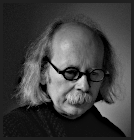 ZBIGNIEW STACHNIAK
ZBIGNIEW STACHNIAK
 ZBIGNIEW STACHNIAK
ZBIGNIEW STACHNIAK